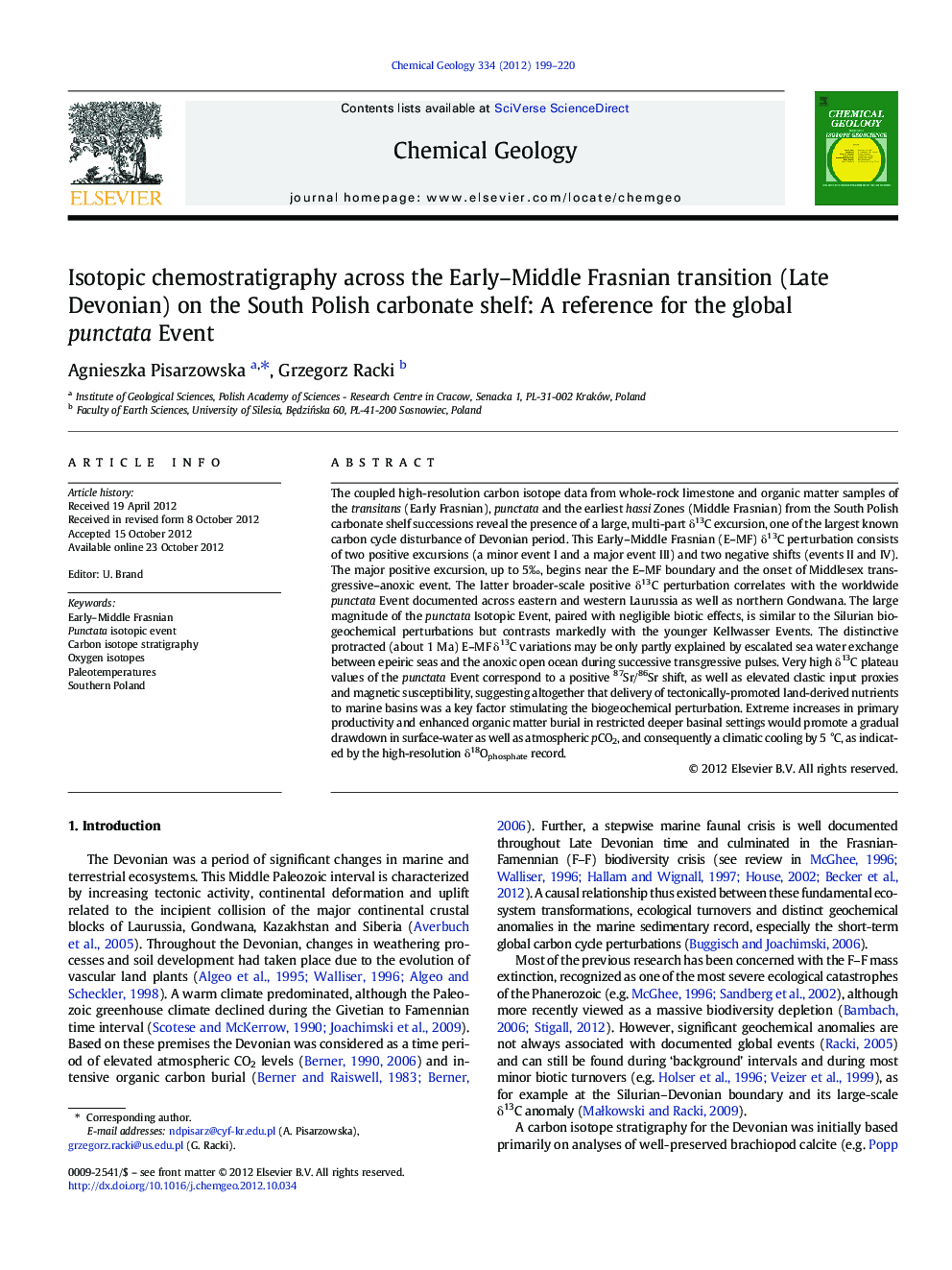| Article ID | Journal | Published Year | Pages | File Type |
|---|---|---|---|---|
| 4699183 | Chemical Geology | 2012 | 22 Pages |
The coupled high-resolution carbon isotope data from whole-rock limestone and organic matter samples of the transitans (Early Frasnian), punctata and the earliest hassi Zones (Middle Frasnian) from the South Polish carbonate shelf successions reveal the presence of a large, multi-part δ13C excursion, one of the largest known carbon cycle disturbance of Devonian period. This Early–Middle Frasnian (E–MF) δ13C perturbation consists of two positive excursions (a minor event I and a major event III) and two negative shifts (events II and IV). The major positive excursion, up to 5‰, begins near the E–MF boundary and the onset of Middlesex transgressive–anoxic event. The latter broader-scale positive δ13C perturbation correlates with the worldwide punctata Event documented across eastern and western Laurussia as well as northern Gondwana. The large magnitude of the punctata Isotopic Event, paired with negligible biotic effects, is similar to the Silurian biogeochemical perturbations but contrasts markedly with the younger Kellwasser Events. The distinctive protracted (about 1 Ma) E–MF δ13C variations may be only partly explained by escalated sea water exchange between epeiric seas and the anoxic open ocean during successive transgressive pulses. Very high δ13C plateau values of the punctata Event correspond to a positive 87Sr/86Sr shift, as well as elevated clastic input proxies and magnetic susceptibility, suggesting altogether that delivery of tectonically-promoted land-derived nutrients to marine basins was a key factor stimulating the biogeochemical perturbation. Extreme increases in primary productivity and enhanced organic matter burial in restricted deeper basinal settings would promote a gradual drawdown in surface-water as well as atmospheric pCO2, and consequently a climatic cooling by 5 °C, as indicated by the high-resolution δ18Ophosphate record.
► One of the largest known multi-part carbon cycle disturbance of Devonian period was revealed on the South Polish shelf. ► A broader-scale positive δ13C perturbation correlates with the worldwide punctata Event. ► Delivery of tectonically-promoted land-derived nutrients to marine basins was a key factor. ► Extreme increases in bioproductivity and enhanced organic matter burial led consequently to a climatic cooling.
